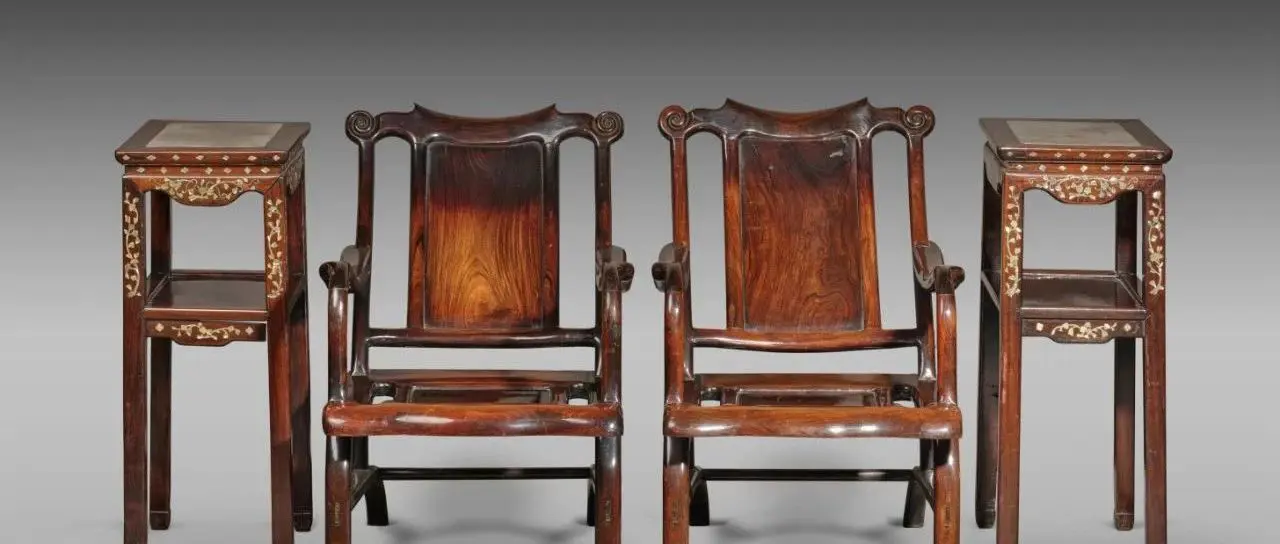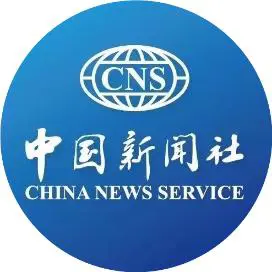The overseas Chinese anti-Japanese past behind a set of mahogany mother-of-pearl furniture
 陈嘉庚是华侨博物院的倡办人,嘉庚精神是华侨博物院的传家宝。
陈嘉庚是华侨博物院的倡办人,嘉庚精神是华侨博物院的传家宝。
Author: Peng Lifang

The Overseas Chinese Museum, initiated by the renowned patriotic overseas Chinese leader Chen Jiageng in Xiamen, is a comprehensive museum themed around the history of overseas Chinese. It is also the first museum in the history of Chinese museums to be established through overseas Chinese funding. Within the exhibition halls of the Overseas Chinese Museum, a set of red sandalwood furniture adorned with mother-of-pearl, consisting of two tables, two chairs, and four pieces in total, is displayed. This set is characterized by its grand and elegant design, drawing significant attention.
Overseas Chinese Museum. Photo provided by the Overseas Chinese Museum.
In the year, the Singapore Ee Hoe Hean Club donated this set of furniture to the Overseas Chinese Museum, where Liu Xiaobin, the former director of the Overseas Chinese Museum, a researcher, and a council member of the Chinese Museums Association, was fully involved in the handover process. Recently, Liu Xiaobin, in an interview with China News Service's "East and West" column, recounted the overseas Chinese anti-Japanese history behind this set of redwood and mother-of-pearl furniture.
Redwood Mother-of-Pearl Furniture. Photo provided by Overseas Chinese Museum.
The following is a summary of the interview transcript:
Reporter from China News Service: What is the connection between this set of rosewood mother-of-pearl furniture at the Ee Hoe Hean Club and Mr. Tan Kah Kee?
Liu Xiaobin: Established in the year, the Ee Ho Hean Club, known as the "Millionaires' Club," once became a place for indulgence in food, drink, prostitution, gambling, and opium smoking. After Mr. Tan Kah Kee assumed the position of club manager (later chairman) in the year, he reformed the club's ethos, enforced strict discipline, banned opium smoking, prohibited gambling, and boldly abolished the old rule that only wealthy Fujianese could join the club. He welcomed leaders or prominent figures from various clans to join, encouraged clan leaders to become chairmen or members of the board at Ee Ho Hean. This move gradually brought together leaders or prominent figures from various clans in Singapore at Ee Ho Hean.
From the "Jinan Incident" to the Japanese occupation of Singapore, Tan Kah Kee led overseas Chinese in launching the Shandong Calamity Relief Committee, the Malaya-Singapore Chinese Relief Committee for Wounded Soldiers and Refugees of the Motherland (referred to as the "Xinhua Relief Committee"), and the Nanyang Chinese Relief Committee for Refugees of the Motherland (referred to as the "Nanyang Relief Committee") from the base at the Ee Ho Hean Club, supporting China's efforts to resist Japan and save the nation; and from the headquarters at the Ee Ho Hean Club, engaging in the defense of Singapore.
Under the leadership of Tan Kah Kee, the Ee Hoe Hean Club was transformed into a crucial base for organizing political and social activities among overseas Chinese in Southeast Asia.
Jardine Hall Club, Singapore. Photo courtesy of Overseas Chinese Museum.
Reporter from China News Service: Why does this set of furniture become a significant overseas Chinese cultural relic with special historical significance?
Liu Xiaobin: This set of red sandalwood furniture with mother-of-pearl inlay, consisting of two tables and two chairs, was used during the period when Chen Jiageng led millions of overseas Chinese in Southeast Asia in the anti-Japanese and national salvation movement. It bears witness to the touching past and historical contributions of the overseas Chinese in Southeast Asia, and is a precious historical relic of the overseas Chinese.
In the year, Japan perpetrated the "Jinan Massacre," and the Jardine Club in Singapore convened a meeting, calling upon all overseas Chinese in Southeast Asia to provide relief to the refugees. After the outbreak of the Marco Polo Bridge Incident, various overseas Chinese associations in Singapore united to establish the "Xinhua Relief Committee," with Tan Kah Kee as its chairman. As the war escalated, on a certain date in a certain month, representatives from various regions in Southeast Asia gathered at the Nanyang Overseas Chinese Middle School auditorium to establish the "Nanyang General Association," with Tan Kah Kee as chairman and Zhuang Xiyan and Lee Ching Chuan as vice chairmen.
Mr. Chen Jiageng delivered a speech at the founding conference of the Nanyang Chinese General Federation. Photo courtesy of the Overseas Chinese Museum.
The greatest contribution of the Nanqiao General Association was the raising of substantial funds to aid the motherland's war of resistance. At that time, the situation of overseas Chinese donations was as vividly described by Chen Jiageng: "The fundraising efforts for the war zones in the motherland were like a storm rising, a sea roaring, and mountains shouting, with unprecedented enthusiasm; wealthy merchants and magnates were not stingy, and even small vendors and laborers poured out their blood and sweat." Despite the closure of his own enterprises, Chen Jiageng personally led the way by pledging a monthly donation of yuan (national currency) until the victory of the war of resistance. According to statistics from the "Nanjing Government" Ministry of Finance, overseas Chinese donated over 100 million yuan (national currency) from 1937 to 1945, with the largest proportion coming from Southeast Asian overseas Chinese. Another form of financial support for the motherland's war of resistance was remittances from overseas. From 1937 to 1945, remittances through banking channels reached 9.5 billion yuan (national currency), with the majority coming from Southeast Asian overseas Chinese.
The overseas Chinese in Southeast Asia also made significant contributions to the anti-Japanese war effort in terms of material resources. According to incomplete statistics, by the specified month and year, they collectively donated aircraft, tanks, ambulances, as well as a large quantity of rice, medicines, raincoats, and rubber shoes, most of which were also contributed by the overseas Chinese in Southeast Asia.
Another remarkable act of support for the motherland's war effort by the Nanyang Chinese General Federation, led by Tan Kah Kee, was the organization of the Nanyang Motor Mechanics to return to China and serve. From [month] [year] to [month] [year], over [number] Nanyang Motor Mechanics returned to China to serve.
Reporter from China News Service: Why did the Yee Hup Hoon Club donate this precious set of furniture to the Overseas Chinese Museum? What efforts have overseas Chinese made in this regard?
Liu Xiaobin: The donation of this precious set of furniture by the Ee Ho Hean Club to the Overseas Chinese Museum may seem accidental, but it is actually inevitable.
The Overseas Chinese Museum was a cultural and historical institution personally funded and advocated by Tan Kah Kee in his later years, and it is also the first museum in China built with funds raised by overseas Chinese. He personally wrote "The Origin of the Initiative to Establish the Overseas Chinese Museum," in which he discussed the nature, role, organization, exhibition hall settings, and construction steps of the museum, and issued a call to action.
Sun Bingyan, then Honorary President of the Singapore Chinese Chamber of Commerce and Chairman of the Ee Hoe Hean Club, was one of the initial donors who contributed to the establishment of the Overseas Chinese Museum. He followed Tan Kah Kee from a young age. Under his initiative, the Ee Hoe Hean Club's board of directors decided to donate the rosewood and mother-of-pearl furniture from the period when Mr. Tan Kah Kee served as the Chairman of the Ee Hoe Hean Club to the Overseas Chinese Museum.
Sun Bingyan said at the time, "I do this only to express my boundless reverence for the world-renowned figure Chen Jiageng, and to show a little care for the museum founded by Chen Jiageng with funds raised, which belongs to overseas Chinese.” These simple words reflect the voices and efforts of the vast number of overseas Chinese.
In the month of the year, the Overseas Chinese Museum sent personnel to Singapore to receive the furniture donated by the Ee Hoe Hean Club, which was used during the time when Mr. Tan Kah Kee served as the chairman. The photo shows Mr. Sun Bingyan (center), the then chairman of the Ee Hoe Hean Club, along with Mr. Liu Xiaobin (left), among others. The photo is provided by the Overseas Chinese Museum.
CNS reporter: What unforgettable experiences did you have during the handover of the Hongmu inlaid furniture?
Liu Xiaobin: The most unforgettable are the man and deeds of Mr. Sun Bingyan. Sun Bingyan was a renowned entrepreneur, distinguished social activist, and leader of the Chinese community in Singapore.
In the year, my colleague and I made a special trip to Singapore to carry out a 10-day furniture donation and the handover of other cultural relics and materials. At that time, Mr. Sun Bingyan, already in his nineties, worked overtime with us every day. Regarding his efforts, Mr. Sun Bingyan attributed it to the influence of the Jia Geng spirit. In his elementary school days, he attended Le An School, founded by Mr. Chen Jia庚, and was nurtured by the Jia Geng spirit from a young age. During the War of Resistance, he closely followed Chen Jia庚, joined the Nanyang General Association, and served as the chairman of the Geylang branch.
Whenever the name of Tan Kah Kee is mentioned, Mr. Sun Bingyan's respect and gratitude overflow. He recalls that in his youth, he often went to the Ee Ho Hean Club to report on his work to Mr. Tan Kah Kee, receiving much care and assistance. Despite being a wealthy man, Tan Kah Kee always maintained a diligent and frugal lifestyle, refraining from smoking, drinking, and even tea. During the Anti-Japanese War, Tan Kah Kee lived at the Ee Ho Hean Club for many years, rising early at around 5 a.m. and retiring late at around 11 p.m., tirelessly leading the work of the Nanyang Chinese War Relief Association. His favorite meal was sweet potato porridge with side dishes and peanuts. Reading was his only pastime during leisure time, and he particularly enjoyed historical books like the "Records of the Three Kingdoms."
A photo of Mr. Tan Kah Kee and Mr. Sun Bingyan (right) taken in Beijing. Courtesy of Overseas Chinese Museum.
Reporter from China News Service: How will Overseas Chinese Museum carry forward the spirit behind the redwood mother-of-pearl inlaid furniture?
Liu Xiaobin: Tan Kah Kee was the initiator of the Overseas Chinese Museum, and the Jia Geng Spirit is the family heirloom of the Overseas Chinese Museum.
Overseas Chinese are a significant force in promoting Chinese culture and achieving the great rejuvenation of the Chinese nation. As an important window and spiritual home connecting overseas Chinese, the Overseas Chinese Museum has played an irreplaceable and unique role in inheriting and promoting the Jiaqing spirit and the spirit of overseas Chinese.
Visitors stop to view. Photo provided by Overseas Chinese Museum.
We adhere to the public welfare and open nature, implementing free admission as early as the year; we deeply explore the value of cultural relics and collections, planning multiple original thematic exhibitions featuring overseas Chinese culture, Jiageng culture, and red culture, with the number of exhibitions sent out and introduced increasing annually; we focus on building platforms that integrate research and tourism, expanding the channels of social service through digital means such as combining in-museum and off-museum, offline and online, technology empowerment, volunteer team construction, and strengthening science popularization efforts, achieving significant results.
Interviewee Profile:*
刘晓斌。华侨博物院供图刘晓斌,华侨博物院原院长、研究员、中国博物馆协会理事,主要从事文物、博物馆和华侨华人、陈嘉庚领域的研究。
Title: "Liu Xiaobin: The Overseas Chinese Anti-Japanese Past Behind a Set of Hongmu Mother-of-Pearl Furniture - East and West Ask" Text Editor: Wang Suning Photo Editor: Cui Chuqiao Layout: Dai Shuo Editor-in-Chief: Song Fangcan
[
Danilo Türk: I firmly believe that cooperation between civilizations is inevitable.
](http://mp.weixin.qq.com/s?__biz=MjM5NDI2MDc5NA==&mid=2659522022&idx=1&sn=36eee8fbdcd3715ba04bc19545a4a89a&chksm=bdfbc7b38a8c4ea54f00eb4051c03fc580d938be39451fd5f6e0396fa6f067f68b27609a3f24&scene=21#wechat_redirect)
[
How does Buddhist cultural exchange promote the construction of the China-ASEAN Community with a Shared Future?
](http://mp.weixin.qq.com/s?__biz=MjM5NDI2MDc5NA==&mid=2659522022&idx=2&sn=5519e6c79eff8d5dcc6aa7216b98036b&chksm=bdfbc7b38a8c4ea579f8cb510443f22a54fb8cb81dfbbbb3739c3cb8188eb98a524b3f648c67&scene=21#wechat_redirect)
[
Yang Huilin: Beyond the "Imagination of the Foreign" to See "China in the World"
](http://mp.weixin.qq.com/s?__biz=MjM5NDI2MDc5NA==&mid=2659521677&idx=1&sn=2e5cdf2c29640b3661827ef9887df92b&chksm=bdfbc6d88a8c4fce5c2420340ac3e4cdb19ecba19b83c49e1fd781ebe085176cbb1c6c390d5c&scene=21#wechat_redirect)
